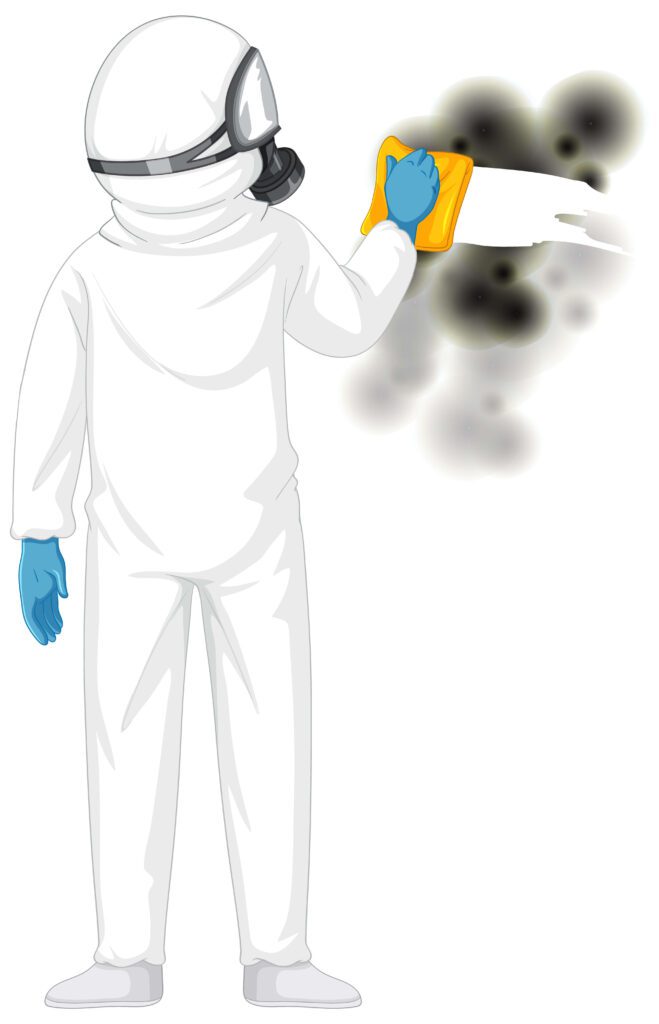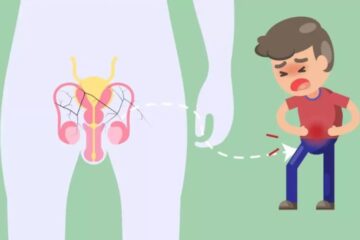Mold toxicity is a health condition that results from exposure to high levels of mold and harmful substances called mycotoxins. Myotoxins are the harmful substances produced by toxic molds.
Toxic mold is directed to certain types of mold that produce harmful substances called mycotoxins. These mycotoxins can become a health hazard when people are exposed to them, causing various negative effects on respiratory, neurological, and overall health.
This exposure can cause adverse effects on human health, ranging from mild to severe symptoms.
10 Warning Signs Of Mold Toxicity
Mold toxicity, also known as mycotoxicosis, can display a variety of symptoms. It’s important to note that individual responses can vary. Not everyone exposed to mold will experience the same symptoms. Typical symptoms & signs of mold toxicity in adults, toddlers & babies may include ;
- Chronic fatigue
- Respiratory distress
- Skin Rashes or IrritationFrequent
- Headaches or Migraines
- Muscle Weakness or Pain
- Digestive Issues Nausea Abdominal Pain
- Memory and Concentration Problems
- Visual Disturbances (Blurry Vision)
- Joint Pain or Stiffness
- Sensitivity to Light and Sound
- Chronic Fatigue
Chronic fatigue can be a warning sign associated with mold exposure. Inhaling mold spores or biotoxins can cause inflammation and an immune system response, leading to chronic fatigue. Mold-related fatigue can range from mild to severe and can significantly affect daily functioning.
2. Respiratory Distress
A continuous cough can be a symptom related to exposure to mold and its toxic byproducts, known as mycotoxins. When people inhale airborne mold spores or come into contact with surfaces contaminated with mycotoxins, it can irritate the respiratory system. It results in symptoms such as coughing. A mold-related cough can be accompanied by other respiratory symptoms like wheezing, shortness of breath, sinus congestion, and sore throat.
Wheezing can be a respiratory symptom associated with mold exposure. Inhalation of mold spores or mycotoxins can irritate the airways. Ultimately causing inflammation and constriction. This can result in wheezing, a high-pitched sound made during breathing.
3. Skin Rashes or IrritationFrequent
Skin rash or irritation may be associated with mold exposure. Contact with toxic spores can cause skin reactions in some people. These reactions may appear as redness, itching, or rash on the skin.
Skin irritation related to mold is often an allergic reaction. The severity of symptoms can vary from person to person.
4. Headaches or Migraines
Headaches can be a symptom related to mold exposure. Inhaling mold spores or biotoxins can trigger inflammation and irritation, potentially leading to headaches. Mold-related headaches can vary in intensity and duration.
5. Muscle Weakness or Pain
Muscle weakness might be a manifestation associated with mold exposure. Mold spores or mycotoxins can trigger an inflammatory and immune system response, possibly contributing to feelings of weakness. Muscle weakness can vary in severity and affect different muscle groups.
6. Digestive Issues
Nausea
Nausea can be a symptom associated with mold exposure. Exposure to mold spores can cause irritation and inflammation, affect the digestive system, and possibly cause nausea. Nausea related to mold can vary in severity.
Abdominal Pain
Abdominal pain can be a common warning sign of mold toxicity. Inhaling mold spores or mycotoxins can cause irritation and inflammation, affect the gastrointestinal system, and possibly cause stomach upset. Abdominal pain related to mold can range from mild to severe.
7. Memory and Concentration Problems
Inhaling mold spores or mycotoxins can cause inflammation, which affects cognitive function, including memory. Mold-related memory problems can range from mild forgetfulness to more significant cognitive challenges.
Inhaling mold spores or mycotoxins can cause irritation and inflammation. It affects cognitive function and concentration. Cognitive symptoms related to dementia, including difficulty concentrating, can vary in severity.
8. Visual Disturbances (Blurry Vision)
Itchy or watery eyes can indicate mold exposure. Inhaling toxic mold spores can cause eye irritation, which triggers a defense response. The body may react by producing tears or itching sensations, which are common allergic reactions. Ultimately causing, visual disturbances.
When mold particles come into contact with the eyes, they can trigger the release of histamines. Histamines contribute to itchy and watery eyes.
9. Joint Pain or Stiffness
Mycotoxins can cause rash and an immune system response, leading to general discomfort and muscle pain. Aches and pains related to mold can vary in intensity and affect different parts of the body.
Inhaling mold spores can cause inflammation and immune system response, leading to joint stiffness. Joint stiffness related to mold can vary in severity and affect different joints of the body.
10. Sensitivity to Light and Sound
Light sensitivity (photophobia)
Sensitivity to light also called (photophobia) can be a symptom associated with mold exposure. Inhaling mold spores or mycotoxins can cause neurological effects, possibly increasing photosensitivity. Recognizing the potential link between mold exposure and photosensitivity is critical in managing symptoms and promoting overall health.
Sound sensitivity (phonophobia)
Sound sensitivity also called (phonophobia) can be possibly one of the warning signs associated with mold exposure. Inhalation of mold spores or mycotoxins can cause neurological effects, possibly increasing sensitivity to sound
| Feature | Photophobia | Phonophobia |
|---|---|---|
| Definition | Sensitivity or intolerance to light. | Sensitivity or intolerance to sound. |
| Triggers | Bright lights, sunlight, or artificial light. | Loud noises or specific sound frequencies. |
| Common Causes | Migraines, eye conditions, or neurological issues. | Migraines, anxiety disorders, or hearing disorders. |
| Symptoms | Eye discomfort, squinting, or headaches. | Anxiety, tension, headaches, or ear discomfort. |
| Management | Wearing sunglasses, avoiding bright environments. | Using earplugs, noise-canceling headphones, or avoiding loud places. |
Mold Toxicity Vs. Mold Allergy
| Aspect | Mold Toxicity | Mold Allergy |
|---|---|---|
| Cause | Exposure to mycotoxins (toxic compounds produced by molds) | Allergic reaction to mold spores |
| Symptoms | Varied, affecting multiple systems including respiratory, neurological, and immune systems | Primarily respiratory symptoms such as sneezing, runny or stuffy nose, and itchy eyes |
| Onset of Symptoms | Can be delayed and chronic, may not immediately follow exposure | Typically immediate or shortly after exposure |
| Immune Response | Can involve both immune and non-immune responses | Immune system overreaction (hypersensitivity) to mold spores |
| Severity | Can range from mild to severe, depending on the level and duration of exposure | Generally mild to moderate, rarely severe, unless there is a pre-existing condition like asthma |
| Duration of Symptoms | Can persist over a more extended period, especially if exposure continues | Tends to be temporary, resolving once exposure is removed |
| Testing Methods | Complex, may involve blood, urine, or tissue tests to detect mycotoxins | Allergy testing, including skin prick tests or blood tests to identify specific mold allergens |
| Treatment | Removal from exposure, symptom management, and addressing underlying health issues | Antihistamines, nasal corticosteroids, and avoiding mold exposure |
| Prevention | Controlling moisture, proper ventilation, and remediation of mold sources | Reducing indoor humidity, regular cleaning, and minimizing exposure to mold |
| Common Conditions | Often associated with water-damaged buildings | Common in areas with high humidity or damp conditions |
| Medical Attention | Essential for diagnosis, management, and addressing health issues | Necessary for accurate diagnosis and to develop an appropriate allergy management plan |


How Can You Prevent Mold Toxicity?


10 ways to prevent the toxicity caused by molds are as follows:
- Control Humidity: Keep indoor humidity levels below 60% to prevent mold growth. Use dehumidifiers if needed.
- Fix Leaks Promptly: Fix water leaks and spills immediately to prevent damp conditions that are conducive to mold.
- Ventilation is key: Ensure good ventilation in bathrooms, kitchens, and other moisture-prone areas. Use exhaust fans.
- Sunlight Matters: Let natural sunlight into your home. This helps prevent the growth of mold.
- Regular Cleaning: Clean and vacuum your home regularly to eliminate mold spores that may be present.
- Proper ventilation in basements: Use proper ventilation and consider installing a dehumidifier in the basement to prevent mold in the basement.
- Use Mold Resistant Products: When renovating or building, choose mold–resistant materials, especially in moisture-prone areas.
- Regular Inspection: Check regularly for signs of mold, especially in areas with a history of water damage.
- Maintain HVAC Systems Properly: Maintain heating, ventilation, and air conditioning (HVAC) systems well to prevent mold growth.
- Deal with Flooding Promptly: If your home is flooded, act quickly to remove water and dry affected areas to prevent mold growth.
How Can You Recover From Mold Toxicity?
Recovering from mold toxicity requires a comprehensive approach. Follow these professional steps for effective recovery:
- Consult a Healthcare Professional:
- Seek guidance from a healthcare provider experienced in environmental health and mold-related illnesses.
- Medical Evaluation:
- Undergo a thorough medical evaluation to assess the extent of mold toxicity and its impact on your health.
- Identify and Address Mold Exposure:
- Determine the source of mold exposure and take steps to remediate and eliminate it from your living environment.
- Symptom Management:
- Work with your healthcare provider to manage and alleviate specific symptoms you may be experiencing.
- Detoxification Protocols:
- Consider detoxification protocols under the supervision of a healthcare professional to aid in the elimination of mycotoxins from your body.
- Nutritional Support:
- Adopt a nutritionally balanced diet to support your immune system and overall health during the recovery process.
- Supplementation:
- Depending on your specific needs, consider supplements that may support immune function, detoxification, and overall well-being.
- Address Underlying Health Issues:
- Work with your healthcare team to address any underlying health conditions exacerbated by mold toxicity.
- Environmental Control:
- Implement measures to control humidity, improve ventilation, and prevent future mold growth in your living space.
- Follow-Up Care:
- Schedule regular follow-up appointments with your healthcare provider to monitor progress, adjust treatment plans, and address any new concerns.
Connection Between Mold Toxicity And Autoimmune Diseases
In the complex dance between our environment and health, mold toxins can play a role in triggering or exacerbating autoimmune diseases.
Think of your immune system as a vigilant security force, always on the lookout for invaders. When mold spores attack, the immune system gets ready to fight. However, chronic exposure can lead to a misguided immune response, which attacks not only the mold but also our tissues. This confusion is a possible recipe for autoimmune chaos. Scientifically, mycotoxins produced by molds can disturb the delicate balance of the immune system, inflame inflammation, and potentially contribute to autoimmune conditions.
Research shows that mold exposure can act as a trigger, igniting a genetic predisposition to autoimmune diseases. It’s important to understand this connection – it’s not just about fighting the visible mold. It’s about protecting the complex functions of our immune defenses. So, let’s not just clean visible mold. Let’s dive deeper into our homes and health.
Tests For Toxic Mold Exposure
If one experiences above mentioned warning signs of mold toxicity and wants to ensure his health condition, following are the scientific tests for mold toxicity detection;
- Blood Tests
- Urine Tests
- Mold-specific IgE Antibody Test
- Mycotoxin Panel Tests
- Skin Prick Tests
- Provocation Testing
- Hair Analysis
- Saliva Testing
- Nasal Swab Tests
- Clinical Evaluation
Why are mold issues difficult to diagnose?
Mold toxicity and other mold-related problems are difficult to diagnose due to a set of reasons based on research. Following are the reasons;
- There is no gold benchmark in testing for mold
- There is no standardized medicine protocol or drug for mold toxicity
- There are very few human-based studies looking at the relationship between mycotoxins and human health
- The display of mold issues is very distinct among patients
- Not everyone exposed to mycotoxins will have a response to them.
Who is at a greater risk for mold toxicity?
Individuals at Greater Risk for Mold Toxicity:
- Individuals with compromised immune systems.
- Those with respiratory conditions like asthma.
- People with allergies or sensitivities.
- Infants, elderly, and pregnant individuals.
- Those undergoing chemotherapy or immunosuppressive therapies.
HVAC System
| HVAC System Components | Description |
|---|---|
| Heating Unit | Provides warmth through methods like furnaces, boilers, or heat pumps. |
| Ventilation System | Circulates and exchanges air, ensuring fresh air supply and indoor air quality. |
| Air Conditioning Unit | Cools and dehumidifies air using refrigerants, maintaining a comfortable temperature. |
| Ductwork | Network of conduits that distribute heated or cooled air throughout the building. |
| Thermostat | Controls the temperature settings, regulating the HVAC system’s operation. |
| Air Filters | Purifies air by trapping dust, allergens, and particles, enhancing indoor air quality. |
| Humidifier/Dehumidifier | Adjusts humidity levels, preventing excessive moisture or dryness in the air. |
| Zoning System | Divides a building into zones, allowing for customized temperature control in each area. |
| Energy Recovery Ventilator (ERV) | Recovers and exchanges energy between incoming and outgoing air streams, improving energy efficiency. |
FAQs
- Weird Symptoms of Mold Toxicity:
Unusual symptoms may include persistent fatigue, respiratory issues, skin irritations, headaches, and cognitive problems. If experiencing such symptoms, consider investigating potential mold exposure. - Checking Yourself for Mold Poisoning:
Look out for signs like chronic fatigue, respiratory distress, skin rashes, and persistent headaches. If these symptoms align with your experience, consult a healthcare professional for proper evaluation and testing. - Identifying Toxic Mold:
Recognize signs of mold, like musty odors, visible growth, and water damage. Professional mold testing can confirm the presence of toxic molds and their potential health risks. - Duration of Mold Toxicity:
Mold toxicity symptoms may improve upon reducing exposure. However, individual responses vary, and complete resolution depends on the severity of exposure and personal health factors. - Detoxing from Mold:
Boost your body’s natural detoxification with a healthy diet, staying hydrated, and supporting liver function. Consult a healthcare professional for guidance on detox strategies. - Permanence of Mold Illness:
Mold illness can improve with reduced exposure and proper treatment. However, individual cases differ, and the extent of recovery varies. - Lung Recovery from Mold Exposure:
Lungs can recover from mold exposure when exposure is minimized. If respiratory symptoms persist, seek medical attention for a thorough evaluation. - Permanent Lung Damage from Mold:
Prolonged exposure to mold can cause respiratory issues. Seeking prompt medical intervention can minimize the risk of permanent lung damage. - Warning Signs of Mold Toxicity in Toddlers:
Watch for symptoms like persistent coughing, skin rashes, respiratory issues, or changes in behavior. Consult a pediatrician if you suspect mold toxicity in toddlers. - Warning Signs of Mold Toxicity in the UK:
Recognize signs such as musty smells, visible mold, or health symptoms like headaches and respiratory issues. Professional mold testing is advisable for accurate identification. - Symptoms of Black Mold Toxicity:
Black mold symptoms may include respiratory problems, skin irritation, headaches, and fatigue. If you suspect black mold exposure, seek professional assessment for accurate diagnosis and remediation.
Final Reflections
Eventually, it is important to recognize the differences between mold toxicity and related health problems. Mold toxicity, caused by exposure to harmful mycotoxins, calls for thorough remediation measures. From understanding the alert signs to executing prophylactic techniques, managing mold concerns is essential to nurturing a healthy environment.
References:




[…] 10 Warning Signs Of Mold Toxicity […]
[…] 10 Warning Signs Of Mold Toxicity […]
Web Development Wizards https://ztd.bardou.online/adm
I would like to post an article http://fertus.shop/info/
Shall we exchange links? My website http://fertus.shop/info/